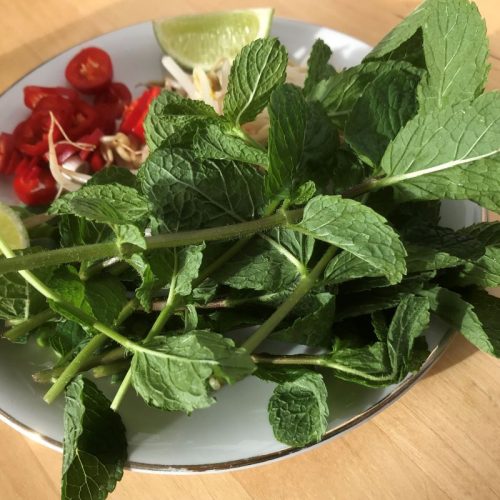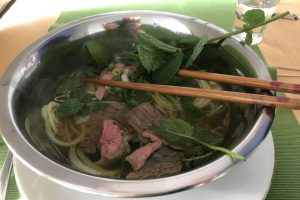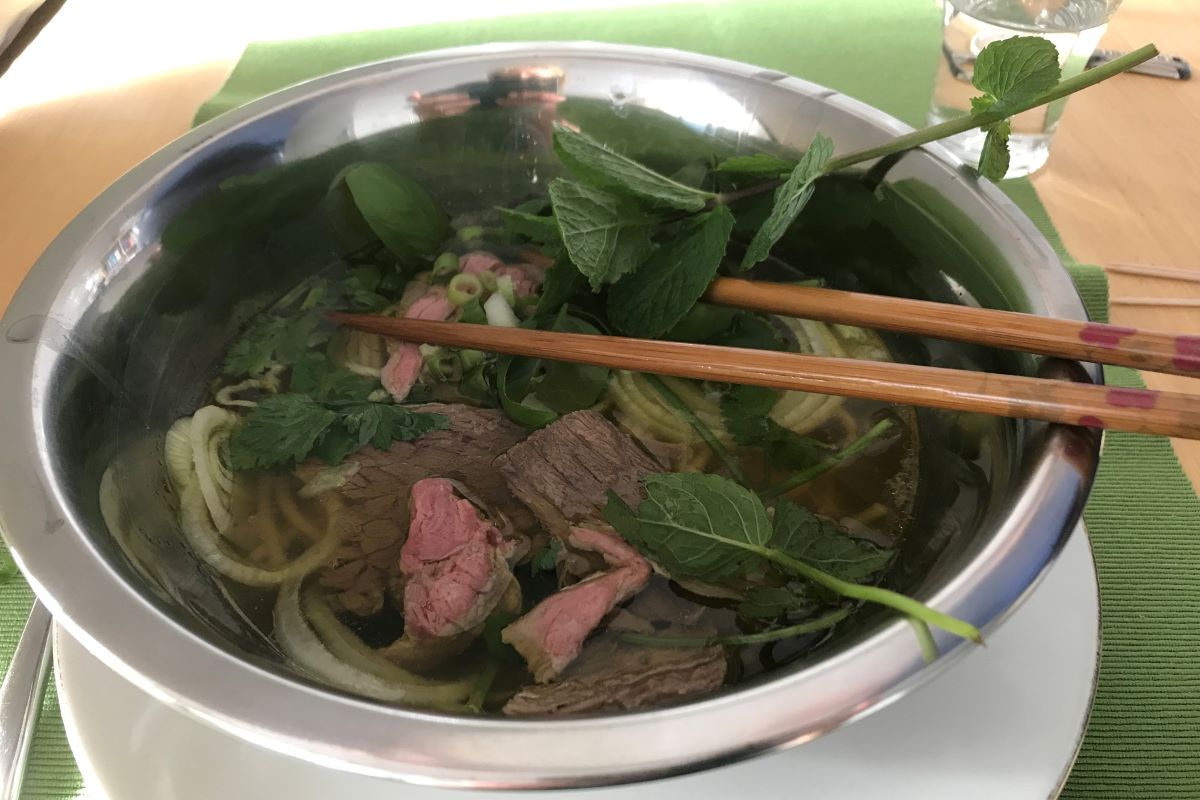Vietnamese Pho is the street food in Vietnam. It combines an intensely flavored broth (usually beef broth, but sometimes also chicken broth) with fresh herbs, vegetables, a slice of meat and rice noodles. The only cooking involved is cooking the noodles and heating the broth. We make the broth in advance , which is then added piping-hot to the fresh vegetables, herbs and noodles.
The dish was developed around 1900 in the north. It found its way to the south around the early nineteen fifties. And then around the world with the exodus of many Vietnamese refugees in the seventies. The origin of the word Pho has created lots of debate. Some say the word ‘Pho’ comes close to the pronunciation of the French ‘feu’ (from pot au feu). But it is also likely that the word comes from the Cantonese language as Chinese immigrants in Hanoi were selling a similar dish. The dish is a meal by itself, and drinking the hearty broth replenishes the minerals lost in the hot Vietnamese climate.
The art of making Vietnamese Pho
The secret of making a tasty Pho lies in making the broth. This is an activity that may take overnight. The good thing is that one can make a large pot of broth in one go which allows for many servings. This is what small eateries and restaurants usually do. Also ensure to have fresh meat ( thin slices of the beef thin loin) and fresh herbs and vegetables and all will be fine. Traditionally rice noodles are used as Vietnam grows rice and no wheat. However, even with wheat egg noodles this dish tastes wonderful.
If you can find them, use Vietnamese mint (also called Laksa leaves in South-east Asia), which I grow in Hong Kong on my balcony. The herb can be difficult to find outside South East Asia, as it requires high humidity and temperature to grow. Unlike the name, Vietnamese mint is not part of the mint family, but the taste has minty, slightly spicy and basil notes. If you cannot find it, use mint and basil instead.
Special equipment
- large enough bowls to serve
- chopsticks

Vietnamese Pho
Ingredients
All the ingredients
- 2 quarts (2 l) beef broth for Pho
- 32 oz (900 g) rice noodles (banh pho)
- 8.8 oz (250 g) beef flank (saved from making the broth) cut in 1/10 inch thickness
- 8.8 oz (250 g) thin loin (cutin thin slices)
- 1 white onion
- 2 spring onions
- 1 bunch cilantro
- 5.6 oz (150 g) bean sprouts
- a bunch Vietnamese mint
- 2 red Asian peppers
- 1 1/2 lemon or lime
- mint or Thai basil optional
Instructions
Instructions to make the soup
- Bring the broth that was made before almost to the boil and keep it simmering
- Cut the meat, clean the herbs and cut the white onion in thin rings
- Then cut the Asian peppers in rings (remove the seeds for less spicy) and the spring onions also
- Divide the lemon or limes in 6 parts
- Cook the rice noodles in water according to the instructions of the packaging
- prepare separate side dishes, containing the lemon pieces, the bean sprouts, the herbs the peppers and the spring onions
- When the rice noodles are ready, quickly drain them and divide over 6 bowls. Add some onion rings and the meat and some spring onions to each bowl
- ladle the piping hot broth onto the bowls and serve with the side dishes
- Guests can stir their bowls to cook the thin loin and add bean sprouts, herbs, pepper and lime

- Serve with Hoisin sauce, soy sauce or fish sauce as a condiment
Notes
Remarks
- Vietnamese mint you can easily propagate by putting a few stems with leaves in water at 25-30 C. Replace the water every day and after a week roots will form. Place in wet soil, even optionally with the feet in water.



